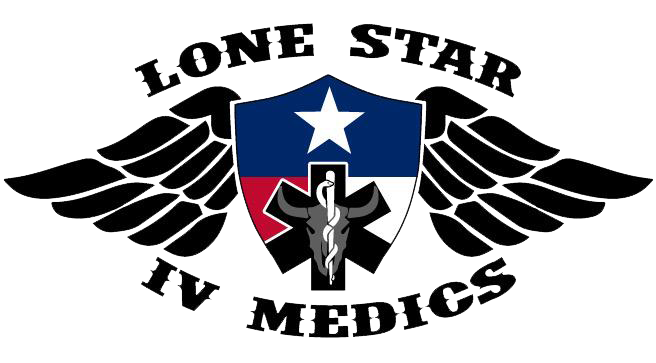New Client Special – One Free IV Add-in (Up to a $30 Value) Schedule Now
IV Bolus vs. IV Push: What’s the Difference?

What Is NAD+ IV Therapy: The Complete Guide
August 19, 2021
How IV Fluids Help With the Stomach Flu
September 27, 2021Table of Contents
- What Is An IV Bolus?
- What Is An IV Push?
- Comparing Infusions: IV Bolus vs. IV Push
- Which Do You Need?
If you’ve used IV therapy to treat dehydration, you know just how effective it can be. IV rehydration therapy delivers fluids, vitamins, minerals, and electrolytes directly into your bloodstream, which helps your body quickly absorb the nutrients.
The result? You feel healthier, more alert, and more energized almost right away. Once you try rehydration therapy for yourself, you will understand why so many people use it to treat symptoms like migraines, nausea, and exhaustion.
But although IV therapy can be beneficial, understanding that IV can be a little confusing. After all, there are so many different terms — infusion, drip, push, bolus — and choosing the right therapy for your needs can feel overwhelming without the proper guidance.
So what is an IV bolus? What is an IV push? And most importantly, what kind of IV is going to get you the greatest benefit? Here’s everything you need to know so you can get the IV that makes you as healthy as possible.
What Is An IV Bolus?
First, let’s clarify some terms. A “bolus,” by definition, is “a single dose of a drug or other medicinal preparation given all at once.” Regardless of whether you use an IV drip or a push, you’ll receive a bolus of vitamins and saline.
When you get a standard IV drip, the medical professional administering the IV will give you a bolus and use a pump or gravity to get the fluids into your system. The IV fluid line is closed off, providing you with a steady drip (hence the name) of constant hydration over several hours.
This is the most common way to get an IV; the way you might receive one if you are hospitalized. But when you’re receiving rehydration therapy, you don’t always have hours to spend waiting for the bag to empty. This is why most rehydration therapy services use faster methods to administer IVs, including IV boluses or pushes.

As we just discussed, any IV contains a bolus of medication. However, an IV bolus also refers to a kind of IV therapy. The fluid line is wide open with an IV bolus, quickly sending the fluids and vitamins into the bloodstream.
Unlike a long-dosing IV drip, which can take hours to empty the bag and replenish your body’s fluids and nutrients, an IV bolus works more quickly — sometimes within five minutes. This is particularly useful if someone needs to get results from their IV as fast as possible. For example, people with type 1 diabetes might get insulin administered via IV bolus.
What Is An IV Push?
An IV bolus delivers fluids faster than your average IV, but an IV push is even faster. While boluses can replenish your body in as little as five minutes, an IV push accomplishes the same thing in as few as 30 seconds.
As for a drip vs. a push, a push differs from a drip in one key way: A drip uses gravity to get you your fluids, while a push sends them into your system via a syringe.
When a medical professional administers an IV push, he or she inserts a syringe into your IV catheter to send the medication into your bloodstream at a rapid pace. Because this method is so extreme, it’s typically reserved for severe situations, like a heart attack. In those cases, medical professionals may inject drugs like adenosine (which restores normal heartbeats) to save the patient’s life.
Comparing Infusions: IV Bolus vs. IV Push
If you want to compare an IV bolus vs. IV push, the most obvious comparison is the time they each require to send medicine (or, in our case, fluids and nutrients) into your blood. It’s also important to note the difference in their medical necessity; an IV bolus is more common for rapid delivery of medication, while an IV push is almost exclusively for emergency situations.
But despite these key differences, IV boluses and pushes also have one key thing in common: They use rapid IV treatments to see immediate results. Unlike standard IV drips that can take over an hour to administer a single 1-liter bag of saline, these IVs deliver the fluids faster, meaning they reach your bloodstream faster.
Which Do You Need?
Now that we’ve compared IV bolus vs. IV push, there’s only one question left: Which do you need to feel healthy, alert, and ready to take on the world? The answer depends on your specific health needs, but in most cases, you can benefit from rehydration therapy with an IV bolus.
And that’s exactly what you’ll get when you order mobile IV therapy from Lone Star IV Medics.
When you order our IV services, our team of healthcare providers will help you find the right combination of saline, vitamins, electrolytes, and more for your specific health condition. Then, they’ll administer the IV bolus, which will hydrate your body and replenish your essential nutrients quickly. The entire process takes only 30-45 minutes, and you’ll feel refreshed and energized as soon as it’s done. Best of all, we bring our mobile IV therapy to you, so you can enjoy the benefits of instant rehydration without ever leaving your home, office, or hotel.
Lone Star IV Medics is made up of experienced and talented medical professionals who will ensure your safety and comfort throughout the process. We have a holistic doctor on staff, as well as emergency physicians on standby via telemedicine in case we need their expertise. But most importantly, we have our esteemed healthcare providers, who have helped make Lone Star IV Medics one of the most trusted names in IV therapy.

Contact us today to book your appointment for mobile IV rehydration therapy in the Texas area. Whether you’re trying to treat chronic migraines or simply nursing a bad hangover, our services will help you feel healthy, awake, and ready for anything.




